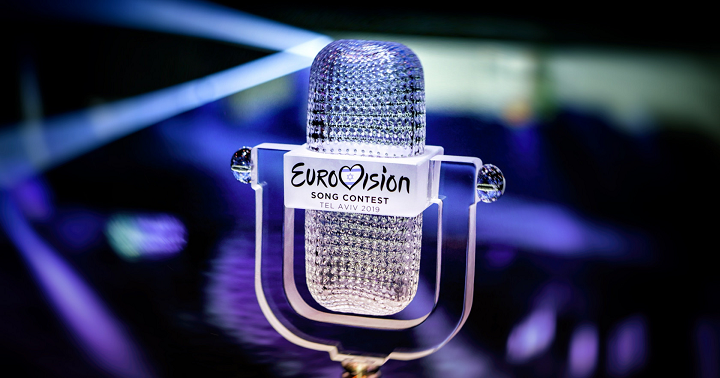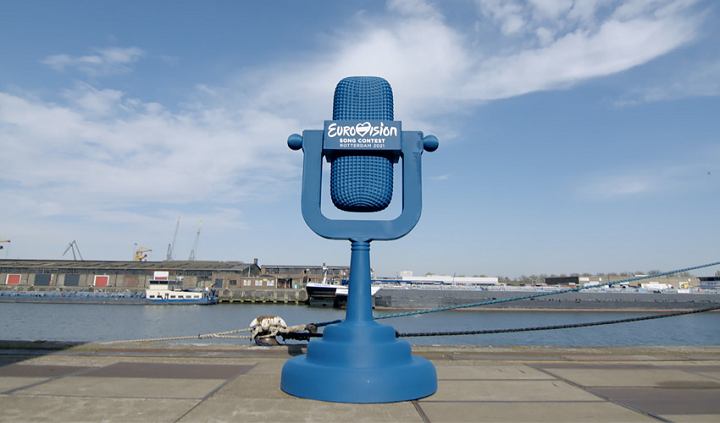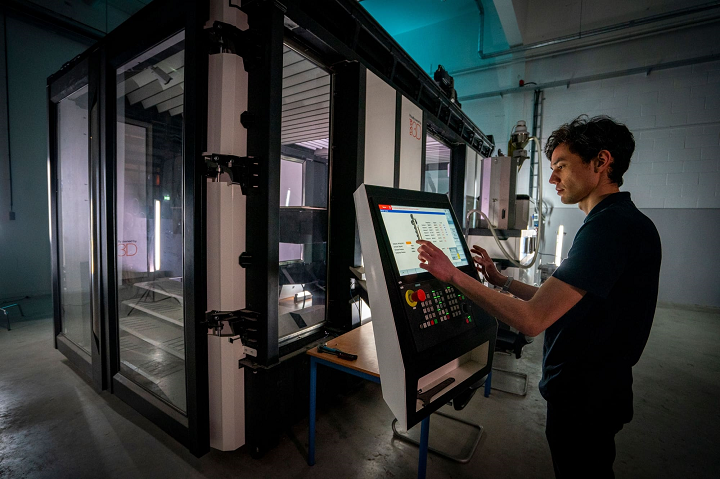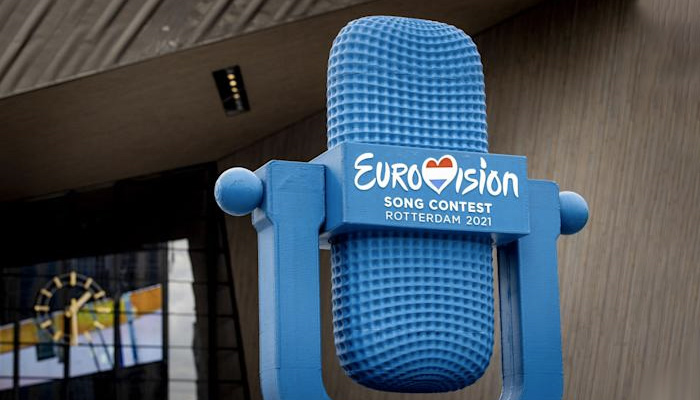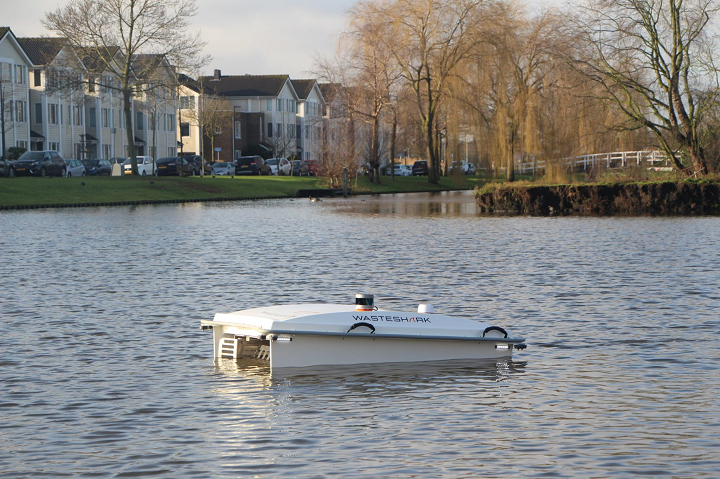Organized by the European Broadcasting Union (EBU), the Eurovision Song Contest sees performers and artists compete each year from countries that are EBU members, including the Netherlands, France, Israel, Germany, Australia, and this year’s winner, Italy. Through either an internal selection process, or one that is nationally televised, each country’s participating broadcaster selects their performing group—up to a maximum of six people—and the original, three-minute song they’ll perform. Not only does the winning team’s country get to host the next contest, but they also take home the coveted glass microphone trophy.
But this year, something extra special happened at Eurovision: a giant version of the microphone trophy, 3D printed from recycled PET, was unveiled ahead of last month’s contest in sustainability hotspot Rotterdam in the Netherlands. The Dutch city, which hosted Eurovision 2021, is actively working towards a waste-free society, and reused plastic waste to build the trophy in order to further promote a circular economy and zero-waste manufacturing to all the spectators. The trophy was made using additive manufacturing because the technology is fairly waste-free, and Rotterdam wanted the four-meter-tall 3D print, with its green footprint, to reflect the city’s character of innovation and sustainability.
“The trophy perfectly matches the Host City pledge for the Eurovision Song Contest #openuptothefuture,” the City of Rotterdam stated. “When we talk about the Rotterdam of the future, Rotterdam is on its way to a society without waste. As a city, we are aware of the need for circularity. Therefore, our city dressing is 90% circular. With this, we want to show every inhabitant of Rotterdam, visitor and viewer of the Song Contest that we, as Host City, take our responsibility. We want to set an example for the rest of the world.”
The Rotterdam Makers District is a place where new technologies, based on robotics, digitalization, 3D printing, and new, sustainable energy and materials are developed, tested out, and applied. One company that calls the port home is circular water-recreation business iKapitein, which rents out boats that are “economical in consumption” while also working to clean up as much litter from the inland waterways as possible. Founded by entrepreneur Wesley dos Santos, the company’s electric eco-barges actually remove plastic waste from the water as they sail using a built-in litter-catching system. All of the PET waste collected by these boats are later converted into 3D printing material for service bureau Royal3D, also based in Rotterdam.
Royal3D uses this recycled PET material to create products, like functional workspaces, on its large-scale CFAM (Continuous Fiber Additive Manufacturing) printer, purpose-built for the company by CEAD in the nearby city of Delft. The technology works by continuously adding glass fiber to the 3D printing material, which produces stronger, more rigid and durable, and sustainable models—like the 3D printed Eurovision trophy. The basis of the trophy is this recycled material, which is 100% recyclable, even if one of Royal3D’s prints fails.
Now that the 2021 Eurovision Song Contest is over, the massive 3D printed sustainable trophy will be auctioned off, with the proceeds going to another Rotterdam company, RanMarine, which is also working to improve the planet’s waterways and oceans by cleaning up plastic and other waste. The company has a litter-cleaning water product similar to the one offered by iKapitein, called the WasteShark.
“Modelled after the Planet Earth’s biggest fish, the Whale Shark. The WasteShark is an autonomous surface vessels (ASV’s) designed to be efficient, long-lived, non-threatening and unobtrusive. With zero greenhouse emissions, our ASV’s are intelligent CleanTech tools used for cleaning our waters. As such, the all-purpose waste and data collection ASV can be used in urban, rural, industrial and leisure environments,” the RanMarine website explains.
RanMarine wants to clear away the plastics and associated waste from local waterways before they make it to the ocean, where it is much more expensive and difficult to collect them. The company’s WasteShark was designed specifically to be used in inland waterways, harbors, marinas, and ports, like Rotterdam.
The 3D printed Eurovision trophy, while obviously a great showcase of what our technology is capable of creating, was less about “oh, look at this cool thing we made” and more about its sustainable possibilities. This whole story just goes to show that when companies collaborate with other like-minded organizations to make the world a better place, great things can be accomplished.
Subscribe to Our Email Newsletter
Stay up-to-date on all the latest news from the 3D printing industry and receive information and offers from third party vendors.
You May Also Like
3D Printing News Unpeeled: A $3000 SLS System, Construction Subsidies and Parameters
The Housing Affordability Crisis is one of Canadian President Trudeau’s biggest issues. Now the government has made subsidies available, including scaling new technologies, 3D printed housing and libraries of reapproved...
“Bundled Light” Enables High Quality Plastic 3D Printing from LEAM
Naturally, we expect current 3D printing methods to continuously improve, but it continues to do so in the most surprising ways. The latest development comes from LEAM, a startup spun...
Each to Their Own: Exploring Creality’s Latest Ender Trio as the Company Strengthens Its Commitment to 3D Printing Advocacy
Creality has reaffirmed its commitment to promoting 3D printing. The launch of the Ender-3 V3 SE, Ender-3 V3 KE, and Ender-3 V3 showcases the company’s dedication to catering to diverse...
3D Printing News Briefs, March 23, 2024: AM in the US Coast Guard, Navy, & More
In today’s 3D Printing News Briefs, we’re discussing the use of 3D printing in various branches of the military, including the U.S. Coast Guard, the U.S. Navy, and the German...


